The Best Portable Car Jump Starters

Between the invention of the self starter and the end of the 20th Century, the best portable car jump starters weren’t something you carried with you. They were heavy lead-acid automotive batteries that only garages and tow truck drivers used. Everyone else carried (and still should) jumper cables, which require two cars and enough knowledge not to short them out. If you had a dead or weak battery and you were on your own, you had to get to a phone or flag down another motorist to have a chance of getting going again.
There are a lot of reasons to end up with a dead battery. Even if you do everything right, they don’t last forever: You should expect to replace one every five to seven years, depending on where you live and how you use your car. Even in new cars and trucks, charging systems can fail, or a battery drain can slowly siphon power away while sitting. And of course, almost everyone has left a dome light or the headlights on, or an accessory plugged into an always-on 12V power port.
Fortunately, you can now buy one of the best portable car jump starters, charge it up, and forget about it for six months or more (they do need topping up occasionally, especially if they get very cold or very hot repeatedly). Almost all of them have USB ports as well, and we often use one in the AutoGuide Garage as an oversized battery bank to charge phones, so they’re useful in all sorts of emergencies.
For more information on the best portable car jump starters, refer to our Table of Contents.
Table of contents
- 1. Editor's Pick: NOCO Boost Plus GB40
- Promoted Product: NOCO Boost X GBX45
- 2. Best NOCO Alternative: GooLoo GT3000
- 3. NEXPOW G17 2000A Battery Starter
- How Many Amps Do I Need to Jump Start My Car?
- What are the Different Types of Batteries?
- How to Use a Portable Jump Starter to Restart Your Car
- How to Tell if the Car Battery is Dead
- How to Jump Start a Car
- Recent Updates:
Why You Should Trust AutoGuide's Product Reviews
We drive the latest new cars, trucks, and SUVs, but did you also know the team at AutoGuide.com tests tires, waxes, wiper blades, and pressure washers? Before we recommend a product as a top pick in one of our popular product lists, our editors put it to the test. We run through all its features, test the claims that the brand makes about each product, and then give an honest opinion on what we like and don’t like from our personal experience. As experts in all-things automotive, from minivans to sports cars, and from portable jump starters to ceramic coating, we want to make sure you buy the product that’s right for you.
1. Editor's Pick: NOCO Boost Plus GB40
After using approximately a dozen jump starters in the AutoGuide Garage, we think the NOCO Boost Plus GB40 is the best jump starter for most people. It's priced about the same as competing models, but is smaller and better constructed than any other jump starter of the size that we tested. The clamps, in particular, are great, even better than the GooLoo's—weak clamps that don't open wide enough can make it impossible to clamp onto a hard-to-reach battery terminal. They also use the same universal connector common across other NOCO products, so you could mix and match if you needed to, although using longer cables would result in a drop in amperage.
What Makes the NOCO Boost Plus Stand Out
We found other little details that make the NOCO easier to use than other jump starters. We loved that the unit turns on with a single short press to the power button, as does the flashlight, which cycles through multiple on and emergency flashing cycles. Other units we tested required an assortment of long and confusing sequences of presses, which might protect against turning them on accidentally, but is a hassle when you actually need to use it. Like every other lithium jump starter we've tested, it has reverse polarity detection, alerting you if you connect the clamps to the wrong battery terminals.
NOCO Boost Plus Specifications and Uses
NOCO says this 1,000A jump starter will give you 20 attempts, but they won't be all at once, and that's under ideal circumstances. The company also claims it'll turn over gasoline engines up to six liters and diesel engines up to three liters, but we'd also say that's optimistic. If you have a high-compression engine, or something larger than a 3.5-liter V6, we'd recommend going at least to the next 1,500 amp size up, if not the 2,000 amp model. The GB40 is IP65 water resistant, weighs just under 1.5 pounds, and is about seven inches long, three wide, and an inch-and-a-half thick.
While it is our top recommendation, there are a couple things we'd like to see improved. We really wish the NOCO Boost Plus GB40 used USB-C in/out, rather than 2.1 amp Micro-USB charging and a 2.1 and USB-A output, but it does come with a car 12V adaptor and USB cable, in case you threw yours away three years ago. Those really aren't big drawbacks, and the size, price, convenience, and otherwise great design should put it in every car.
Pros | Best clamps in the business, comes with 12V adaptor and charging cable, extremely compact |
Cons | Only 1,000A, USB-mini charging, no USB-C port. |
Promoted Product: NOCO Boost X GBX45
The NOCO Boost X GBX45 1250A 12V Portable Jump Starter is an extremely powerful, versatile, and reliable tool that can jump start a wide range of vehicles.
It can be easily stored in a car trunk and is always readily available when needed. The high peak current of 1250A means it can jump start even large vehicles with ease (6.5-Liter Gas and 4.0-Liter Diesel Engines). It also has a built-in safety system that prevents overcharging, overheating, and reverse polarity, providing added protection for both the device and the vehicle.
NOCO has turbo charged it’s charging ability to fully charge in 48 minutes or get a jump start out of it in just 5 minutes. Other features include a built-in LED flashlight and a USB charging port. The heavy-duty clamps are color-coded for easy identification and coated with a rubberized material for added grip and protection.
Having this tool on hand can save you from being stranded with a dead battery and also come in handy in a wide range of other situations. It's a must-have in your car emergency tool kit.
2. Best NOCO Alternative: GooLoo GT3000
We've tested numerous jump starters in the AutoGuide Garage, and after testing, the GooLoo is the one we use most often when we have a dead battery, which is distressingly often. Measuring 9.06 x 3.94 x 2.12 inches and weighing over four pounds, it's a lot chonkier than most of the competition, but it's in the more powerful 3,000/600 peak/starting amps range, with a 84.36Wh battery.
The GooLoo jump starter also has battery clamps that are on par with those of the NOCO. They're bigger and open wider than others; in fact, we discovered at least three brands used the same, small, completely interchangeable clamps. This may sound like a small detail, but we've jump started many engines with portable jump starters, and small clamps can be a big problem, preventing you from getting a good grip on the dead battery.
We've also often used the USB and USB-C charging ports, which are behind a protective rubber shield. Our biggest frustration in testing is the flashlight, which requires an inconvenient 12-second press on the power button to turn off. We also found the included cloth carrying bag is too small, and the clamps tend to stick out. Those are minor complaints, and as a result, we typically keep a GooLoo jump starter in our emergency kit.
Pros | Great clamps, 3,000A peak power, three USB ports |
Cons | Frustrating flashlight, too big for a glove compartment, carry bag is too small |
3. NEXPOW G17 2000A Battery Starter
We've tested numerous portable lithium-ion jump starters on AutoGuide, and with a few exceptions like the great clamps and terrible flashlight on the GooLoo, there aren't many significant differences among them. The Nexpow model G17 2,000 amp is a minimalist variation on the theme, slimmed down to the basics: indicator lights, a few USB ports, and a flashlight.
Fortunately, all of those work well, although it shares the same low-quality interchangeable cables and clamps as Imazing and other brands we tested, indicating they're all probably made by a few factories and styled and branded for various sellers. The Nexpow jump starter promises a 2,000A peak burst to start engines up to a claimed 7.5-liter gas or 6.5-liter diesel, but in our experience you should cut those numbers in half. It did start a 3.0-liter gas engine with a very low battery for us, which is about all we'd expect of it.
The Nexpow jump starter uses an 18,000 mAh battery with a claimed shelf life of up to two years, and doubles as a powerful battery pack with USB Type-C support and Quick Charge 3.0 compatibility. It also charges up over USB-C, which is very convenient. It's rated at a wider -4°F/-20°C to 140°F/60°C range than most other jump starters we tested, but again, we wouldn't expect much from it under about 15°F. We did find that It's extremely light and compact measuring 9 x 3.4 x 1.2 inches, although the fitted, zippered case takes up a lot more room.
Pros | Extremely affordable, high capacity in a small package, in/out USB Type-C support, LED flashlight |
Cons | Poorly written instructions, same short cables and low-quality clamps as every other bargain brand |
Jump Starters vs. Jumper Cables
Portable jump starters are much safer and easier to use than jumper cables, although most of them, can’t provide as much power. You just clamp them directly onto your battery terminals, turn it on, and after a few seconds, try to start your car. Most of them have overheat protection, so after a few tries you’ll have to wait for them to cool down, but they also have enough power for multiple starts. They also have reverse polarity protection, and won’t do anything bad if you connect them the wrong way around.
Lithium Ion vs. Traditional Jump Starters
If you have a V-8 or diesel engine, have to start heavy equipment (or a lot of old cars), or live in an area with very cold weather, you’re going to need a much larger jump starter than our top recommendations. High-wattage lithium-ion boosters are very expensive, so you might want to look at the conventional old-style battery jumper packs on our list. Most lithium-ion jump starters can only be used above about 15°F, and are only good for three attempts before they need to cool down. Lead-acid jumper packs can be used repeatedly and are capable of cranking for much longer. They also have long cables with heavy-duty clamps.
How Many Amps Do I Need to Jump Start My Car?
As you can tell, portable jump starters have a variety of specifications that could make it tricky to determine the right one for your vehicle. You should know that jump starter power is typically indicated in cold cranking amps (CCA) or peak amps (PA). To measure CCA, a fully charged battery is placed in a cold environment—0°F—and the number of amps it discharges for 30 seconds is determined.
It's true that the more amps a jump starter offers, the more powerful it is. But does that mean you should just purchase the most powerful product? Not necessarily.
What's important is determining just how much power you need for your vehicle. Compact cars or even small sedans can be jump-started with as little as 150 CCA, while full-size trucks and SUVs need around 450 CCA. However, there are other factors to consider, such as engine size and the age of the vehicle. Larger engines and older vehicles will require more amps to jump-start, as will diesels with high compression; this is why you will typically see powerful jump starters advertised as being capable of starting engines as large as 8.0 liters. Generally however, 400-500 CCA is adequate to start most vehicles. The colder the temperature, the more CCA you will need as well.
If you're trying to jump-start an older carbureted vehicle, you will usually need far more cranking time and amperage for a hot spark than a modern fuel-injected one. But as no one has sold a vehicle with a carburetor in Canada or the United States since the 1994 Isuzu P'up, that's not likely to be a problem.
Keep in mind that there may be times when you have to help jump-start someone else's vehicle. Most of the products on this list will cover any passenger vehicle on the road today, but it never hurts to have something more powerful at your disposal if you're willing to spend the extra money.
What are the Different Types of Batteries?
There are two kinds of batteries commonly available in jump boxes: lead-acid and lithium-ion (Li). Li batteries are the same ones you find in a cellphone and are very energy-dense, meaning they hold a lot of electricity for their size. They also tend to be able to charge faster than lead-acid. However, they are also more sensitive, losing power quickly in extreme cold. Inconveniently, Li batteries last longest when they are not fully charged. Keeping them between 85% and 25% full can make them last up to 50% longer, but of course, you want your portable battery charger at 100%. Slow charging and discharging also help a lot—again, not what you need in a jump starter. The trade-off is a much smaller and lighter battery pack.
Lead-acid batteries are similar to traditional car batteries, although they increasingly use other technologies. These batteries are very dependable, durable, and heavy, as they contain actual lead. Unlike Li batteries, lead-acid batteries prefer to be kept fully charged and should be topped off every 30 days and after each use. To get the most out of a lead-acid battery pack, you can even break it in by slowly discharging it to under 50% and then charging again. After 20-50 cycles of this, a lead-acid battery will actually have more capacity than it initially had. And it's easy to do—just use the included USB or DC ports to power and charge your personal electronics. This will be exactly the right sort of slow discharge for the formatting or priming cycle.
It's up to you to choose between potentially less expensive and lighter Li battery jump starters that might have a shorter lifespan, and large, heavy lead-acid jump boxes that can last a long time.
How to Use a Portable Jump Starter to Restart Your Car
Every person should know how to jump-start a dead car battery—it's just a useful life skill to have. Knowing how to jump a car will save you time and money so you don't have to call a tow truck, or maybe help out someone stuck on the side of the road on their way to a job interview. While most people will wave down a passerby or call a friend to help with the jump, drivers can save even more time and do it themselves if they have a portable jump starter in their glove box or trunk at all times.
But if that's not an option, here is a step-by-step illustrated and easy-to-follow guide on safely jump starting your car the traditional way. Bookmark this page on your phone so you have it handy in case of an emergency.
How to Tell if the Car Battery is Dead
Before you equip yourself with jump-starting skills, it’s critical to establish that the battery is the actual reason the automobile won’t start. If you turn on the ignition and the engine makes a cranking noise, a dead battery is not the problem and jump-starting it will be a futile exercise. Conversely, if the car is totally dead upon turning the key and there's no noise, or maybe just clicks, then it’s highly likely that you have a dead battery in your vehicle and jump-starting it is perhaps the only option.
How to Jump Start a Car
- First, park the functioning vehicle in a way that both the cars are facing each other, preferably only 1.5 feet apart, but never touching one another. More importantly, park the automatic transmission cars, while putting the manual transmission ones in neutral.
- Make sure to put parking brakes on both the cars, so neither of them moves unexpectedly.
- Both vehicles must be turned off, with keys out of the ignition.
- Turn off everything in both cars--radio, overhead lights, heaters, and headlamps if you can. You want all the power to go to starting.
- Place the jumper cables on the road/ground, while ensuring that the clamps do not touch/collide with each other.
- Open the hood/bonnet of both the cars and find the batteries (consult the owner’s manual for exact location, some are in the trunk, or even under the back seat), and battery terminals. Typically, the two terminals on respective batteries are color coded red or black, signifying negative “-” and positive “+” charge.
- It’s crucial to correctly identify both the charges to successfully jump-start the car. Also, if the battery terminals are grimy, wipe them off with a wire brush or rag.
- Attach the red (positive) cable clamp to the (+) terminal of the dead battery. You must firmly connect the clamp to the battery terminal, which may well necessitate some wiggling of the clamps.
- Now affix the red (positive) cable clamp on the other end of the jumper cables to the operative vehicle’s (+) battery terminal.
- After that connect the black (negative) cable clamp to the functional battery’s (-) battery terminal.
- Now go over to the automobile with the lifeless battery. Remember, do not attach the black (negative) clamp to the dead battery, instead affix that cable clamp to a metal, unpainted part of the vehicle such as a bright, clean screw on the car engine block. It will help ensure a safe car jump.
- Start the working car.
- Wait for at least a minute or two. Depending on your battery’s age, and how long since it stopped working, you will need to let the car run for a few minutes to start to get some charge into the dead battery.
- Now try starting the inoperative car. If the vehicle does not start, allow the running vehicle to charge the battery for a few more minutes before attempting again. On a few occasions, moderately revving the engine of the operative car while charging the lifeless battery may help.
- Once the defunct car is running, you can start disconnecting the jumper cables, beginning with the black (negative) cable clamps. However, don’t let the clamps touch one another while any part of the jumper cables is still connected to a car.
- Now, go for a drive. It will enable the battery to build up a charge. Also, the drive will allow the car’s alternator to charge off the battery and assure that your battery won’t die again once you switch off the engine. If your car didn't start because you left the lights on and not because you have a bad battery, you should drive your car for at least 45 minutes to ensure you'll have enough charge to start it next time.
Recent Updates:
- February 1, 2024: Reduced our list of recommendations to three products, all of which we have extensively tested. Updated some content to better reflect hands-on testing results.
- May 8, 2023: Fixed grammar and spelling errors throughout the article. Updated some text for clarity. Our recommendations remain the same.
- April 4, 2023: Added Hulkman Alpha85 recommendation.
- January 3, 2023: Removed promoted product recommendation.
- November 28, 2022: Added hands-on review and photos of NOCO Boost Plus GB40.
- November 25, 2022: Removed sold-out Imazing Im39 jump starter.
- October 2, 2022: Removed Staley J509 jump starter, replaced Nexpow 1500A jump starter with 2000A model. Updated product descriptions and links.
- October 21, 2022: New introduction, removed Audew and Viking 450A jump starters, added GooLoo GT3000 and Imazing 2000A.
We are committed to finding, researching, and recommending the best products. We earn commissions from purchases you make using the retail links in our product reviews. Learn more about how this works.
AutoGuide may accept review samples for testing and evaluation. Suppliers of review products do not have any input into our conclusions and are not allowed to review our content before publication.

After completing a degree project in automotive design, Dave wrote and photographed for almost a decade in print car magazines (remember those?), before transitioning to digital. He now subjects a series of old high-performance cars to the roads and weather in Vermont and wonders why they're always expensively broken. Please stop when you see him crawling under one on the side of the road.
More by David Traver Adolphus




























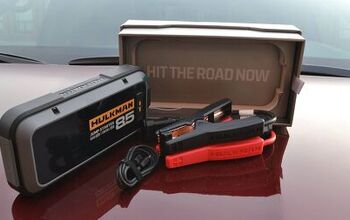
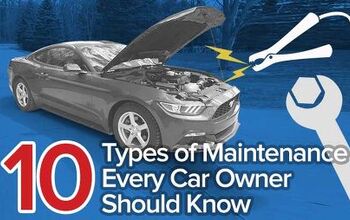
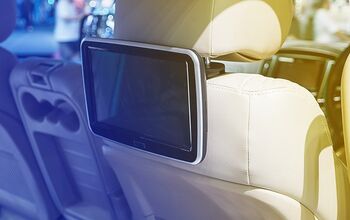
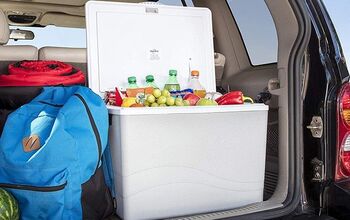



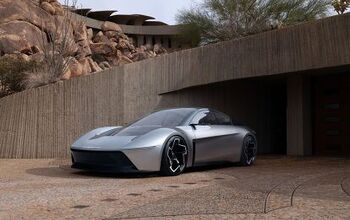






Comments
Join the conversation
Great article and info and explanations.
I wouldn't be without a portable car jump starter. Having one has saved me many a headache.